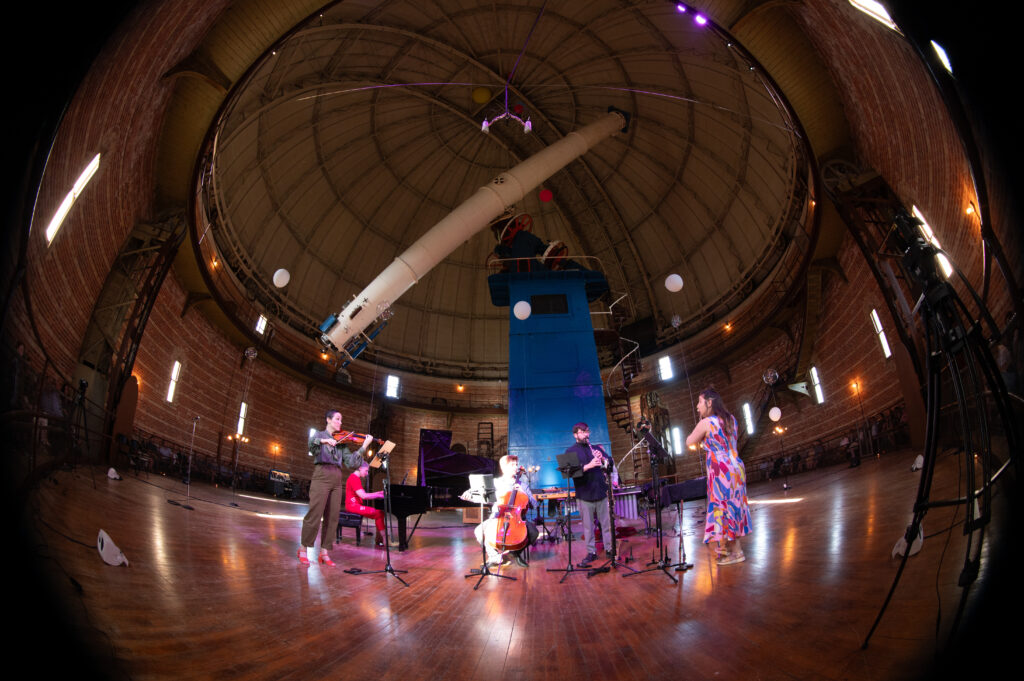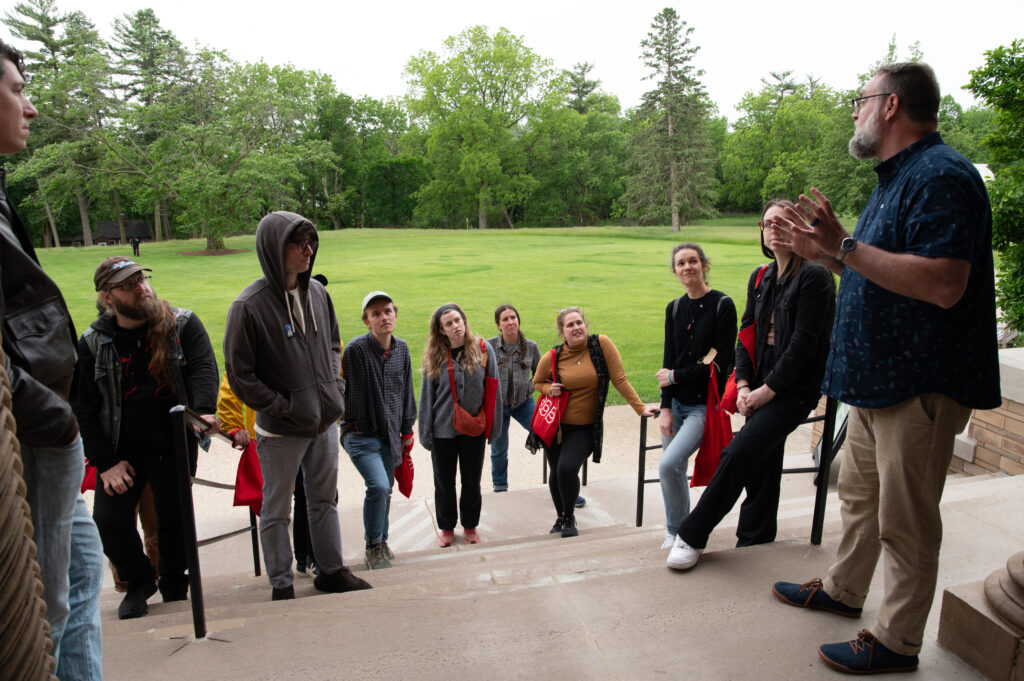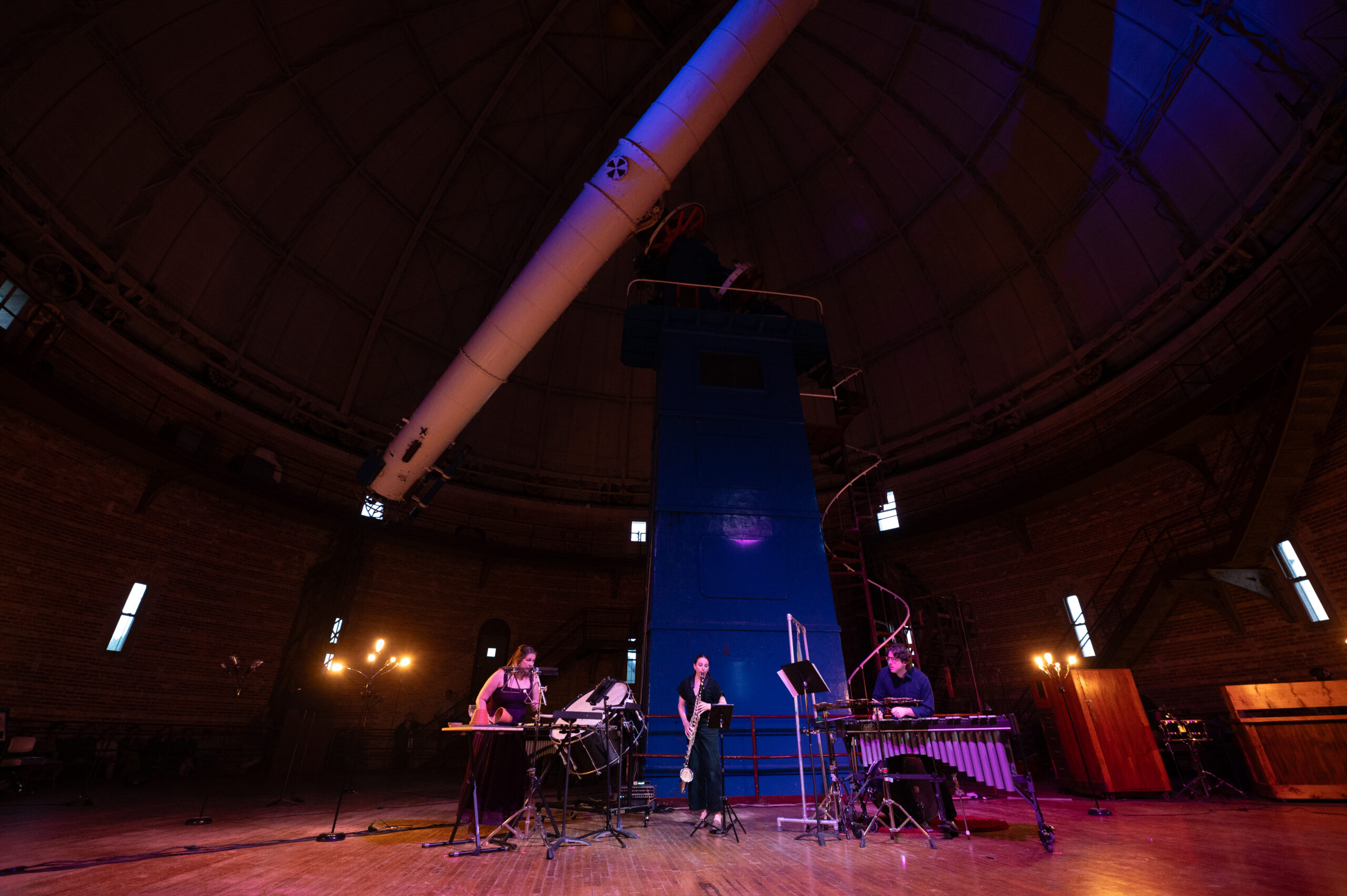Yerkes Observatory, in Williams Bay, Wisconsin, calls itself a 125-year-old start-up. Widely regarded as America’s most historic observatory—names like Carl Sagan, Edwin Hubble, and Nancy Grace Roman once dashing through its hallways—Yerkes seemed destined to become a dusty museum. And then, growing like a nascent star, it found a second life.
“The University of Chicago couldn’t make this facility work exclusively as an observatory,” says Walt Chadick, Yerkes’ director of programs and external affairs. Observatories are in the sky, or on mountaintops in faraway lands—not subject to the light pollution of Chicago. When the Yerkes Future Foundation took over in 2020, they needed a new plan. “We realized we needed to branch out beyond what astronomy is to what people make based on astronomy,” says Chadick. That’s how we could make an impact on our community.”
DR. AMANDA BAUER, DEPUTY DIRECTOR, YERKES OBSERVATORY“Connecting our material to art—we’ve got the largest glass lens used for astronomy, 180,000 glass plates—that’s the through line for all of these cross-pollinated, big ideas.”


Reopened in May 2022, Yerkes has already put its mission to work: Poet laureates, Grammy winners, NASA sculptors, Pulitzer-winning authors, and composers and artists across nearly every genre have gathered here to be inspired by astronomy. The result? Ideas as big as the cosmos.
Prior to the University of Chicago handing over the reins to the Yerkes Future Foundation, the aging facility was slowly becoming an archaeological site. “They had the occasional Saturday tour,” explains Dr. Amanda Bauer, deputy director and Yerkes’ head of science and education. “They ran summer camps and had a bunch of 3D printers—but it was more of a museum as opposed to whatever you call what we are now.”
When pressed, Bauer calls Yerkes a “science destination.” She quickly adds caveats: the history, the art, the architecture, and the landscape—Yerkes is an Olmsted site and an accredited arboretum.
Those caveats have served as Yerkes’ artistic compass: US Poet Laureate Tracy K. Smith read “Life on Mars” under the gaze of the Great Refractor, the largest refracting telescope in the world; 30 musicians, led by Grammy Award-winning ensemble Eighth Blackbird, composed and performed new works based on star images and plates; Ashley Zelinskie, the official sculptor for NASA, created a custom work evoking light bending through spacetime, infused with nods to Yerkes’ historic details; and the world’s largest glass tree, blown onsite, marked Christmas. “Connecting our material to art—we’ve got the largest glass lens used for astronomy, 180,000 glass plates—that’s the through line for all of these cross-pollinated, big ideas,” says Bauer. “That’s the sort of thing we’re doing here.”
In 2024, the Blackbird Creative Lab is back alongside more summer events, from a puppet show directed by Ann Hamilton, a visual artist known for her large-scale multimedia installations, to a night with Jonathan Bailey Holland, dean of music at Northwestern University. Artists “go down that road of what is the science of music and art,” says Chadick, “using old astronomy equipment, using books and our plate collection to inform composition. We keep astronomy at our core, and then we bridge-build from there.”




